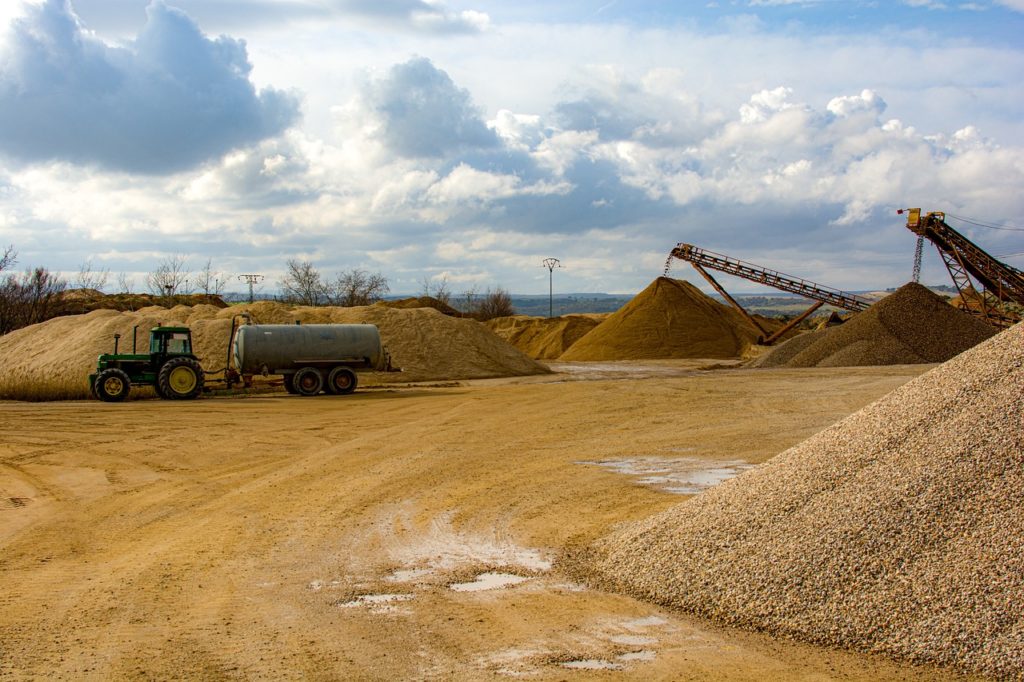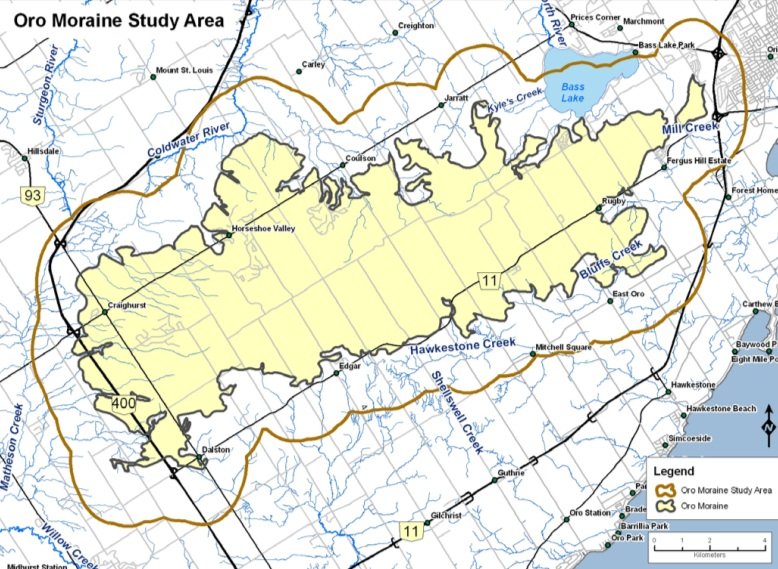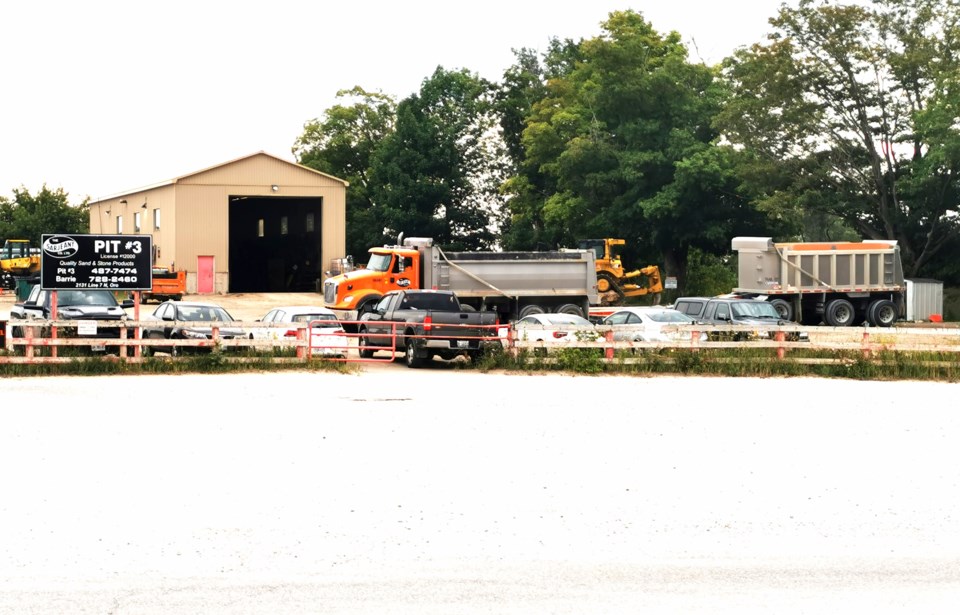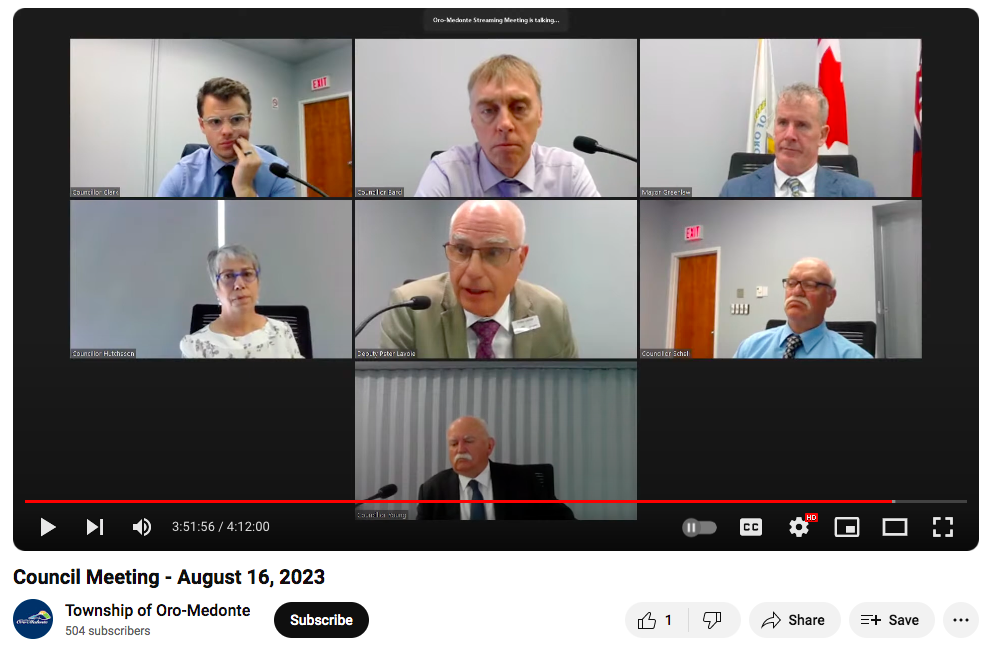What is a gravel pit?
A gravel pit/quarry is a type of open-pit mine used for the extraction of sand and gravel (aggregate) from a deposit near the surface of the earth.
Gravel is the feedstock to new highways and urban sprawl. Most aggregates are used to manufacture cement and construct buildings, roads, bridges, sewers, and other infrastructure.
Aggregate extraction is incredibly destructive to local ecosystems and biodiversity and there is also a very high carbon footprint associated with the production of concrete and asphalt, which are major end-users of aggregates (more on this later)
There are currently 22 gravel pits/quarries in Oro-Medonte occupying nearly 2,800 acres of land and there are further lands in the township’s Official Plan designated for potential aggregate expansion.

What is the Oro Moraine?
The Oro Moraine, like most other moraines, is a formation of sand and gravel deposited by glacial action during the last ice age. Located in Oro-Medonte Township (between Orillia and Barrie), it is fairly large, about 26 km long, covering approximately 42,000 acres.
The Oro Moraine serves several important ecological functions. It acts as an important groundwater recharge for its immediate area, filtering and controlling flow into the nearby, Minesing Swamp (a provincially significant wetland), among other places. It is known by scientists as an Ecologically Significant Groundwater Recharge Area. Because of its varied terrain and substantial forested areas, it also provides habitat for many plants and animals that are becoming increasingly rare elsewhere in central Ontario.

Sarjeant’s Gravel Pit
One of the gravel pits in Oro-Medonte is on Line 7, which the Sarjeant Company Ltd. has operated for about a decade.
This past summer (August 2023), Sarjeant applied for a provincial “permit to take water” for industrial-aggregate washing purposes.
The permit would allow them to pull a maximum of 454 litres of water per minute, 24 hours per day at a maximum of 200 days per year for a decade – equivalent to 523 Olympic-sized swimming pools, or 1.3 billion litres.
And as if this wasn’t bad enough, they applied for a ‘Category 3 Designation’ which states, in their words: “water takings are anticipated to have the highest potential for causing unacceptable impact and interference.”
Despite widespread opposition (including over 100 comments received during their consultation period), the province approved Sarjeant Company’s proposal on December 13, 2023.
Ironically, the Ministry of the ‘Environment, Conservation and Parks’ were the ones to approve the permit.

Where does Oro-Medonte Council stand?
It is important to note that Oro-Medonte’s Township Council took a significant stand against gravel mining in the township.
In their August 16th meeting (begins at timestamp 3:45:30), every council member spoke in opposition to the proposal, and Mayor Randy Greenlaw reflected these views in his comments to the province.
Also noteworthy, in April 2022, the previous Council supported and unanimously passed a motion in favour of requesting a moratorium on new gravel pits and quarries to the province. This moratorium seeks a better understanding of the need for aggregate expansion, a better understanding of the negative impacts of aggregate mining and calls for improvements to the approval and oversight of the aggregate industry.
Unfortunately, the provincial government oversees matters related to gravel mining and so Municipal Councils are often rendered voiceless.

The broader state of gravel mining in Ontario
While the approval of Sarjeant’s proposal is egregious, it represents a broader issue which is the unregulated gravel mining industry in Ontario.
Ontario’s current application process for gravel mining (from RGMC):
- Allows uncontrolled proliferation of gravel sites across Ontario
- Favours corporations and places an unfair burden on municipalities and local communities forced to advocate for the protection of the natural environment and built communities
- Does not fulfill the requirements for free, prior and informed consent of Indigenous Nations as guaranteed in the Canadian constitution
The government of Ontario has already authorized the gravel mining industry to extract thirteen times more gravel each year than is required to meet long term average annual consumption.
You can see a map of all aggregate pits on Open Aggregates.
The organization ‘Reform Gravel Mining Coalition’ (RGMC) has long been advocating for a moratorium and offer significant policy proposals.

What you can do
Follow and support other groups working to protect the Oro Moraine:
- Save the Oro Moraine
- Green Orillia
- Stop Sprawl Orillia
- Simcoe County Greenbelt Coalition
- The Couchiching Conservancy
- Nottawasaga Valley Conservation Authority
- Lake Simcoe Region Conservation Authority
Learn more about the Reform Gravel Mining coalition and take action by:
- Signing their petition demanding that the Ontario government impose an immediate moratorium on all new gravel mining approvals.
- Emailing your MPP using their email tool